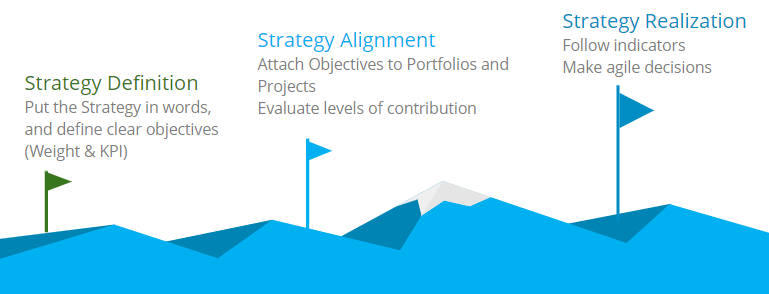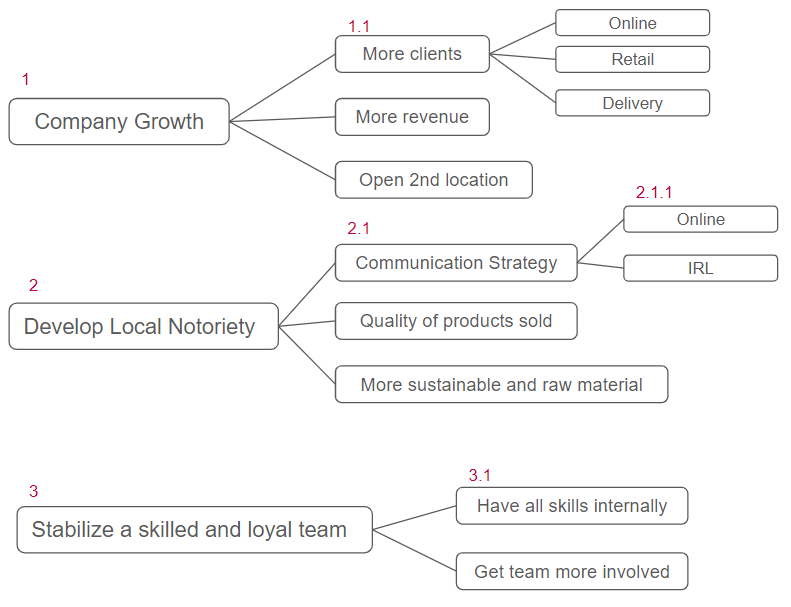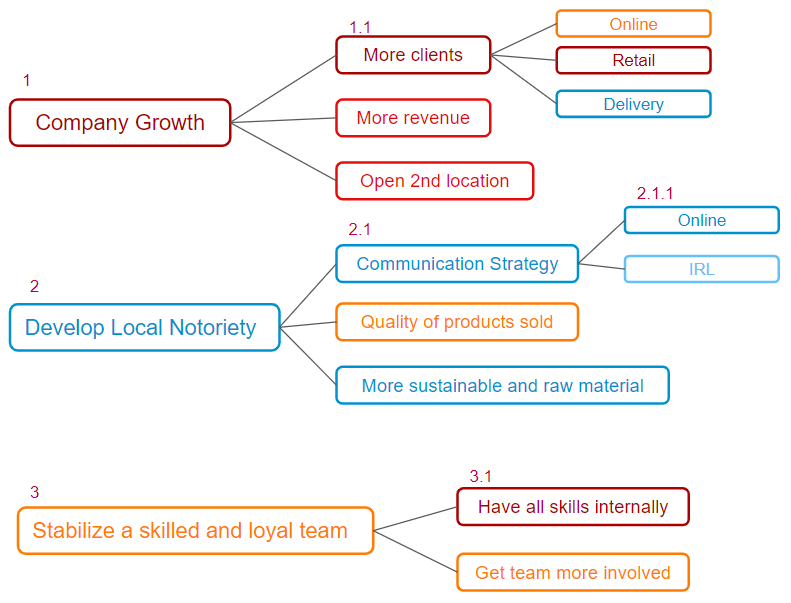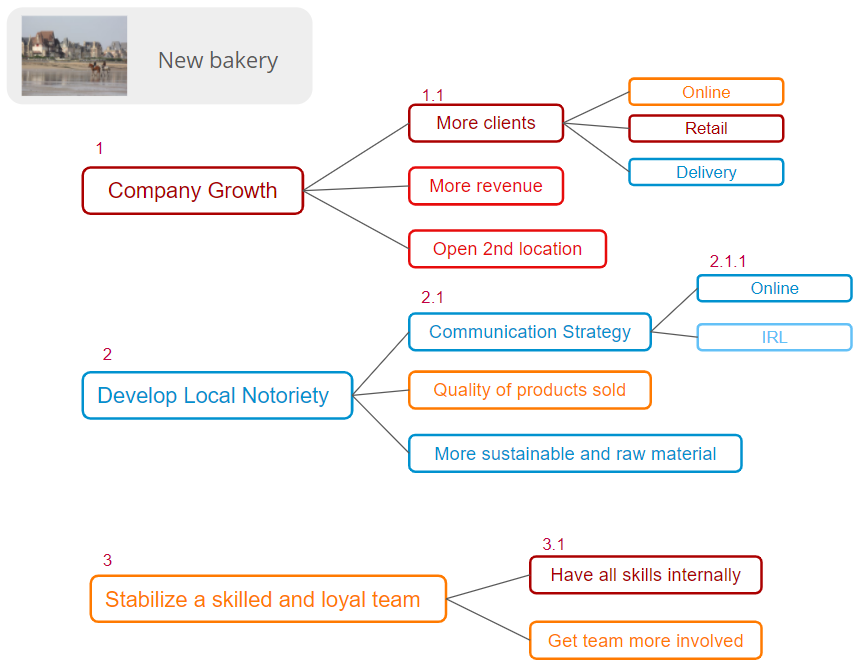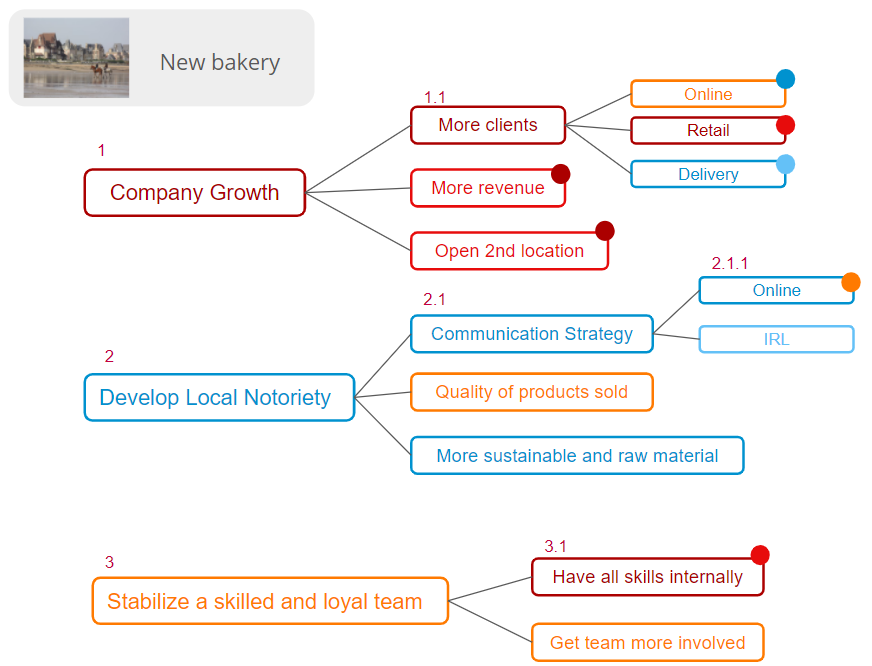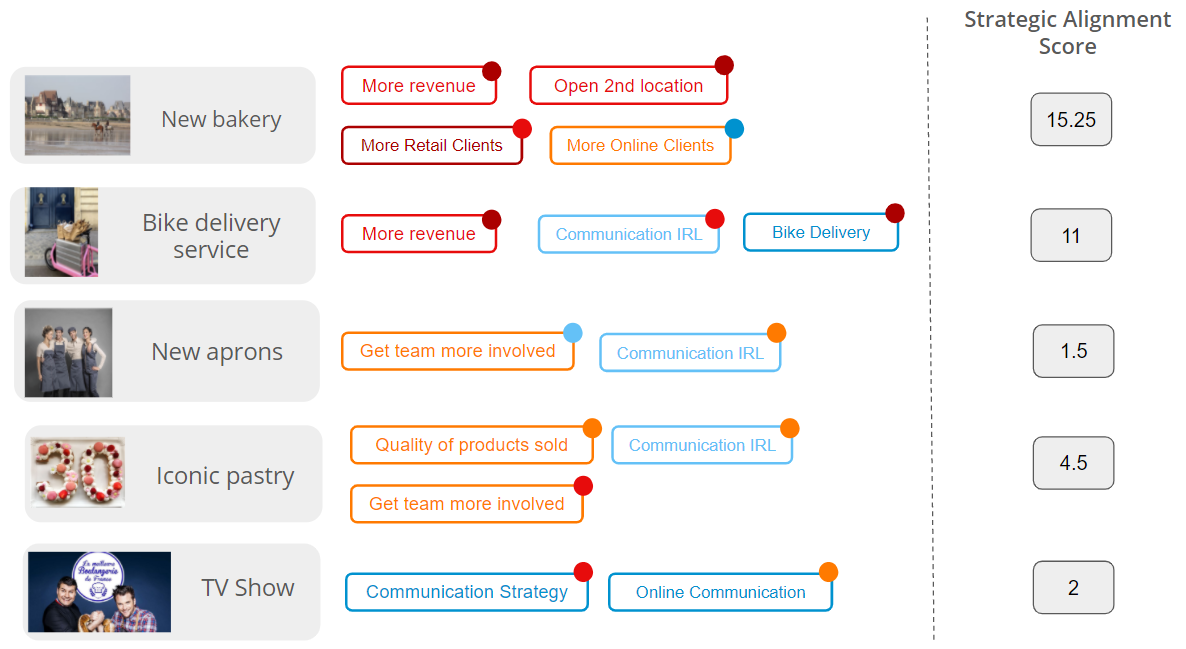The strategy-to-execution process provides a structured approach to clarifying, communicating, implementing, and managing Strategy. The goal of this process is to ensure the organization focuses on developing high-value capabilities and making investments that optimize value.
Once a project is started, it will continue if its performance criteria are good but at the end of the day, does the project really contribute to the company, even if its KPI are good?
There are three major phases in the Strategy-to-Execution process, namely, Strategy Definition, Strategy Alignment, and Strategy Execution.
Strategy Definition phase – The purpose of this step is to build the structure of the strategy by defining the objectives for the company to achieve. The main goal is to have a clear definition of a company strategy that can be shared and communicated.
Strategy Alignment phase – One of the interests of clearly defining the strategy is to be able to relate to it while choosing the future projects that the company may launch.
Assessing the alignment level of a project with one or multiple objectives of the company strategy will help evaluate and understand its level of contribution and decide whether or not it is worth being funded.
Strategy Realization phase – While Strategy Alignment helps identify the projects that are supposedly the most likely to deliver high value to the organization, it is at least as important to make sure that the expected value is actually being delivered. This is what Strategy Realization is about.
By tracking the value delivered by each project, it will allow the company to identify underperforming initiatives and possibly terminate them to free up budget and resources for new more critical projects.
The Strategy-to-Execution process in Sciforma will be broken down into three steps:
Defining the strategy,
Aligning the strategy,
Realizing the strategy and Evaluating it (i.e., value delivery) over time.
Let’s illustrate the Strategy-to-Execution steps with a real-life example.
Welcome to Deauville, a famous resort in France.
Mr. and Mrs. Dumont have been the proud owners of their bakery for 30 years.
Over the years, their bakery has successfully grown from a small family business to what it is today, thanks to several projects that were carried out successfully:
Enlarge the Deauville store and upgrade the storefront,
Set up an e-commerce website for click and collect orders,
Manage their social media.
As for the next decade, they have many ideas and potential projects that could be launched.
All these projects are great, but they won’t be able to juggle them all at once, as they still need to manage the current projects as well.
Mr. Dumont thinks the most important thing to do is open a new location.
Mrs. Dumont thinks they should concentrate on increasing revenue with the bike deliveries.
Their communication agency in charge of the community management would rather see them prepare themselves for the TV show by getting those aprons done!
Each person they ask has their own opinion.
How to decide with a clear mind what’s best for the company?
They need a Strategy!
The purpose of this step is to build the structure of the strategy by:
Writing a clear definition of the company strategy that can be shared and communicated.
A strategy is a detailed plan for achieving company success.
Defining the objectives for the company to achieve.
An objective is a business goal the company plans to accomplish. To measure its success, the objective must be quantified and measured and will ideally be time-constrained. Objectives should lead to the delivery of benefits and value to the company.
In Sciforma, Objectives will be defined by:
Key attributes – such as a Name, a Description, a Created Date, a Workflow, etc.
All objectives are not equally important within the Strategy. To compare them and eventually help make decisions, we will be attributing an Objective Weight to each of them. Objective Weight will support the following values:
NoteA Final Weight will be computed as the average value of all the weights of the full Objective path (objective itself + parent branch).
KPI attributes – such as a Name, a Unit, a Type, a Current value, a Target value, etc.
NoteKPI will only be supported for Objectives at the lowest level of the tree.
Let’s put the strategy of Mr. and Mrs. Dumont into words, and define clear objectives.
“Our Strategy for the next 10 years is to grow sufficiently to be able to sell our company at a very good price and retire peacefully.
To do so, we are going to concentrate on things that bring us local notoriety. We would also like our team members to be independent enough if we sell to investors.”
Once the hierarchy of objectives is set up, the vision starts to be clearer.
One of the interests of clearly defining the strategy is to be able to relate to it while choosing the future projects that the company may launch.
Once Objectives have been created, Portfolios and/or Projects can be attached to Objectives so that all the Key Attributes will be shared.
Let’s attach the New bakery project with Objectives:
When a project is attached to an Objective, its level of contribution to this objective can be set thanks to its Project Alignment Level.
It will help evaluate and understand levels of contribution, and decide whether or not the project is worth being funded.
The Project Alignment Levels are the following:
The Project Alignment Level combined with the Objective Weight defines the Strategic Alignment Score.
Strategic Alignment Score = Alignment level x Objective Final Weight
Let’s attach the New bakery project Alignment Levels:
Then, proceed the same way for all projects in order to define the Strategic Alignment Score for the potential projects:
For Dumont’s Bakery, and according to the strategy, the projects to launch are:
Open a new bakery at Cabourg - 15.25
Set up a bike delivery service for online orders - 11
While Strategy Alignment helps identify the projects that are supposedly the most likely to deliver high value to the organization, it is at least as important to make sure that the expected value is actually being delivered. This is what Strategy Realization is about.
Tracking the value delivered by each project will allow the company to identify underperforming initiatives and possibly terminate them to free up budget and resources for new more critical projects.
The calculation will be based on the comparison between the Target values, the Current values, and the Expected Target values at date.
The Objective Health will be represented by the following icons:
 Good
Good Must Improve
Must Improve Not Good
Not Good
